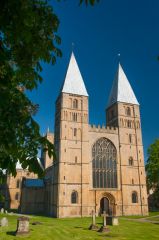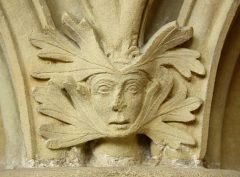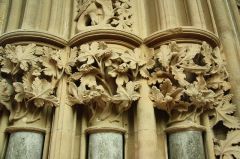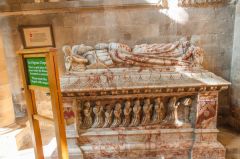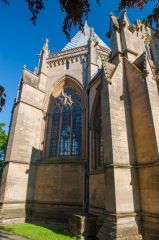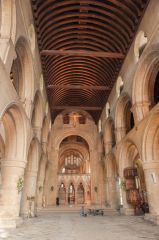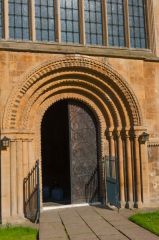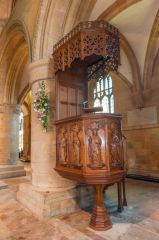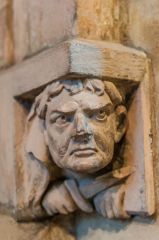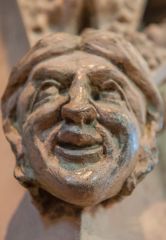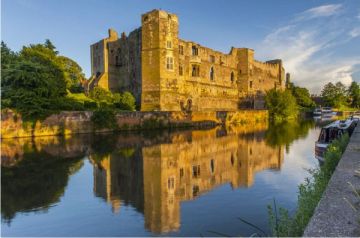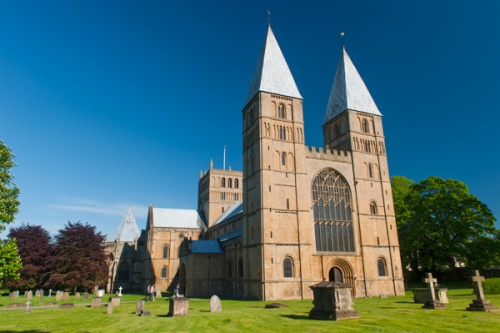
Southwell began as a Saxon manor, but in the 10th century it was granted to Oskatel, Archbishop of York. The remains of the London palace of the archbishops can be seen beside the cathedral. The present minster church was begun in 1108, and it remains one of the best examples of the Romanesque style in England.
History
Oskatel founded a college of secular canons at Southwell, and these canons acted almost a local government for the area. In 1108 Archbishop Thomas began building a new cathedral in the Norman style. One unusual feature of this Romanesque building was that the chancel was squared off at the end.
The chancel was rebuilt in the 13th century, but apart from that, the main body of Southwell Minster is essentially Norman, with thick, rounded Romanesque piers and rounded arches. The fact that so much of the Norman architecture has remained unaltered makes the nave of Southwell one of the best examples of Romanesque architecture in England.
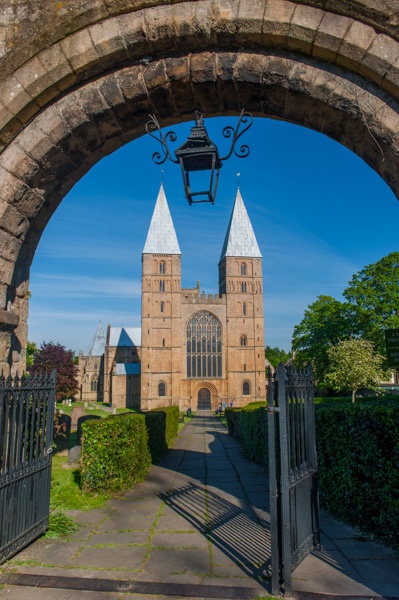
The distinctive west towers that flank the broad entrance doorway were originally topped with spires but these were replaced with the current pyramidal roofs in 1880. Above the west door is a huge 15th-century window that helps fill the interior with light.
The Southwell Tympanum
One of the most interesting historical treasures inside the Minster is the 'Southwell Tympanum', a carved lintel stone variously dated from the 9th-11th century by experts. This massive stone is set in a 12th-century wall, so it was obviously brought here from elsewhere.
The beautifully intricate carving shows the Archangel Michael wielding a sword, in combat with a serpent, or dragon. To one side is a damaged figure, presumably King David, pulling at the gaping jaws of a lion. Interestingly, the underside of the stone is carved in a Celtic interlace pattern, which stylistically seems much earlier than the main carvings.
It seems likely, then, the stone was originally a grave marker, and was reused with a new carving added to send a Christian message in the symbols of David and Michael in combat with evil.
The Pulpitum Screen
The heavy, stolid Norman nave gives way abruptly to 13th-century exuberance when you reach the pulpitum screen separating the nave and chancel. The screen is one of the glories of 13th-century sculpture in England; a complex symphony of delicately carved foliage, strange faces decorating the capitals, and every surface seemingly more intricately carved than the last. But the pulpitum is merely a warm-up act for the superb chapter house.
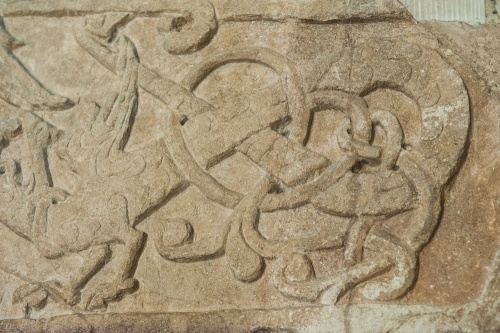
The Chapter House
The Southwell chapter house was begun around 1290, and sadly we know nothing about the craftsman responsible for this work of genius. Every capital, cornice, and column seems to spring to life, with botanically correct carvings of foliage and flowers, with human figures dotted amid the flora. Here are buttercups, vines, maple, hawthorn, hop, ivy, and more.
Each treatment is unique, each so obviously drawn from a close study of nature. Unlike later highly stylised medieval carving, the Southwell foliage is detailed and correct, right down to the angle at which leaves grow from their stalks. The attention to detail is quite extraordinary and unlike anything else in England. This is, indeed, the work of a master craftsman at the height of his powers.
The chapter house itself is octagonal but without a central column. The roof is a superb stone vault, the vaulting ridges leading inexorably down to create 36 separate stalls. Each stall is decorated with a tympanum and capitals of leaves.
Very unusually, the chapter that administered the Minster survived the Reformation and was not dissolved until 1840. Many of the elegant historic houses that surround the Minster were once residences for members of the chapter.
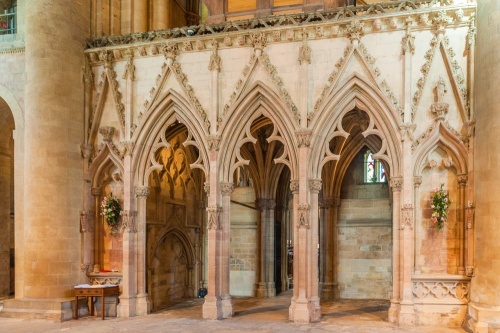
Visiting
The chief reason to visit Southwell is its remarkable carving, notably on the pulpitum, but especially in the 13th-century chapter house. Decorative foliage festoons the 36 stalls and the capitals of the chapter house and the corridor and vestibule leading to it.
The botanical precision of the carvings is extraordinary: grace and beauty evoked from cold stone. Southwell itself is a wonderfully picturesque town, full of historic interest, and well worth taking the time to explore.
Just outside the town - in the direction of Newark - is The Workhouse, the best-preserved example of a Victorian workhouse in England and a model for a generation of similar foundations around the country.
About Southwell Minster
Address: Church Street,
Southwell,
Nottinghamshire,
England, NG25 0HD
Attraction Type: Cathedral
Location: In the centre of Southwell, well signposted (and impossible to miss!)
Website: Southwell Minster
Email: office@southwellminster.org.uk
Location
map
OS: SK701537
Photo Credit: David Ross and Britain Express
POPULAR POSTS
HERITAGE
 We've 'tagged' this attraction information to help you find related historic attractions and learn more about major time periods mentioned.
We've 'tagged' this attraction information to help you find related historic attractions and learn more about major time periods mentioned.
Historic Time Periods:
Find other attractions tagged with:
10th century (Time Period) - 11th century (Time Period) - 12th century (Time Period) - 13th century (Time Period) - 15th century (Time Period) - Celtic (Architecture) - chapter house (Architecture) - Decorated (Architecture) - Medieval (Time Period) - Norman (Architecture) - Reformation (Historical Reference) - Saxon (Time Period) - Victorian (Time Period) -
NEARBY HISTORIC ATTRACTIONS
Heritage Rated from 1- 5 (low to exceptional) on historic interest
Southwell Workhouse - 0.8 miles (Historic Building) ![]()
Elston Chapel - 5 miles (Historic Church) ![]()
Hawton, All Saints Church - 5.6 miles (Historic Church) ![]()
Kelham Hall - 5.8 miles (Historic House) ![]()
Newark Castle - 5.9 miles (Castle) ![]()
Newark on Trent, St Mary Magdalene Church - 6.1 miles (Historic Church) ![]()
Screveton, St Wilfrid's Church - 6.6 miles (Historic Church) ![]()
Car Colston, St Mary's Church - 6.7 miles (Historic Church) ![]()
